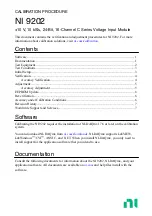
Installing and putting a TIM into operation
4.3 Design of the TIM 3 and TIM 4 modules
Station control system
System Manual, 07/2009, C79000-G8976-C178-07
149
4.3.3
LEDs of the TIM 3 / TIM 4
The following table summarizes the meaning of the six LEDs during normal operation. The
display during startup is explained in the section "Startup activities of the TIM 3 and TIM 4
(Page 177)".
Table 4- 11 Meaning of the LEDs on the front panel of the TIM 4
LED no.
Labeling
Relevant TIM port
Type of WAN
driver
Description
1
SF
All
-
Group error
Indicates missing or bad parameter settings and
RAM errors.
2
TXD
Internal modem
interface
Not relevant
See note below
3
RXD
Internal modem
interface
Not relevant
See note below
4
MPI / K
MPI / K bus
-
Data flow over MPI / backplane bus
The display state changes with each message
received or sent over MPI / backplane bus.
5
TIM-BUS
TIM-Bus
-
(not currently used)
6
DCF77
DCF77 radio clock
-
Status of the DCF77 clock (if installed)
As long as the time of day is clear, the LED is lit
constantly and is sampled briefly at second
intervals.
Note
If the TIM sends or receives data over its external modem interface, this is not indicated by
the TXD and RXD LEDs of the TIM. In this case, the LEDs of the external modem provide
information about the current send and receive activities of the external interface.
4.3.4
Pinout of the X1 and X2 connectors
The X1 connector is designed as a 9-pin D-sub miniature male connector. The pinout is
shown in the following table. As an RS-232 port, the pinout corresponds to that of a
standardized PC connector.
The connector can be configured either as an RS-232 or as an RS-485 port using the 8-pin
DIL switch available from above through the grill in the housing.
















































